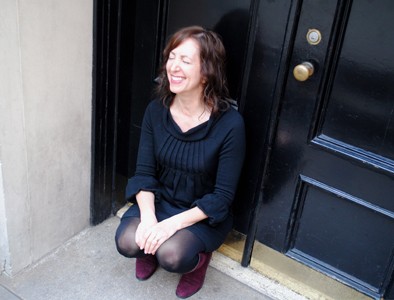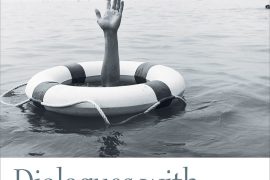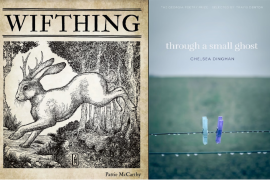White: An Abstract by Joy Katz
Abstract, by definition:
Adjective
- existing in thought or by definition but not having a physical or concrete existence
- relating to abstract art.
Verb
- consider (something) theoretically or separately from something else.
- extract or remove (something).
Noun
- a summary of the contents of a book, article or formal speech.
- an abstract work of art.
- that which is abstract; the theoretical consideration of something.
In reading Joy Katz’s chapbook, which identifies itself at the outset as a book about race and the contemplation of whiteness by a white speaker, I found the choice of vehicle (poetry) and vessel (chapbook) so interesting for an interrogative examination of this nature, the depth of which can only be rendered as abstract in all its literal meanings.
However, words carry immense power. To harm. To help. To vilify. To erase. Katz admits this. She uses erasure in several poems to further illustrate this when talking about race, going so far as to consider the potential of the color white as a color to erase all other colors. The skin. The sky. The words on a page. The names on a birth certificate. Many of these short prose poems are concerned with the speaker’s adoption of a Vietnamese child who the locals want to protect from the sun to “keep the boy white / they said / by any means.” This collection asks: must it always be the responsibility of persons of color to hold that mirror up to white faces and ask: what privilege have you known because you were born white?
The poems, brief wisps of narrative, are conflicted. Many things have been taken for granted by the white community for a long time. The relationship between the speaker and her son is the catalyst for this self-examination. For the mother to ask herself: what culture have I imposed on you and what culture have I taken from you by doing so? It is an examination that not all mothers of children from other cultures would have and, as an abstract, it continues a very necessary conversation.
But does the speaker only come to these realizations because her child doesn’t have the same rights and protections? I think that’s a question for any white person reading, and the impetus for this project. The speaker concedes that every person in her poems is white. That’s how she imagines them. But that is also what keeps them safe, as she states, “so long as your son is in my poem, he can concern himself with delight and not with staying alive.” Imagining life as white person, then, is both a haven and a reflex. There is a parallel argument being made by this book: in our lives, do we have the capacity to imagine anything except the self that is taught to us from birth? Why or why not? How then should we respond to the world when we have “no reasonable access to [anyone else’s] truth?”
In a breathless thread of short poems, many questions and possibilities are raised, and thank goodness they are. Most of us don’t have the capacity to look that closely at ourselves and admit we want “something for [ourselves]” in the aftermath of brutal acts against persons of color, when offering comfort from a safe distance. As Katz’s speaker states, “Comfort is damaging. Who am I to comfort.” Self-awareness, too, comes with a price. It demands that we pay attention to the needs of others lest good intentions contribute to any problem in a meaningful way. Ignorance is far easier.
Famous poets rule the poems of Flesh Enough. Many of the poems contemplate what the great forebears of poetry are doing on our tongues, in our offices, in our ears. How the speaker functions alongside and outside of them. Yet, the poems really take flight when based in the body, human or otherwise. In a poem about the deaths of Sandra Bland, Trayvon Martin, Michael Brown, and countless others, the poem ends with three repetitive lines:
“if we believe the mind has arms
if we believe the mind has arms
flesh enough to lift the body.”
The “if” then becomes the potential to stop these crimes from repeating themselves. The word “arms” stands in for both appendages of the body and the weapons that took the lives of many people. The threat being the mind itself.
Among the many questions posed by the speaker, the question as to how we can better take control of our minds and bodies is a central concern of this collection. From the animal kingdom to the human realm, these poems examine the rituals and belief systems of the many different creatures that must live within the rules of the worlds to which they are born. The speaker self-identifies as Jewish, but there is conflict in doing so. In the poem, “Cousin,” she states:
“Our pots and pans are spoiled, cousin, with sins
I don’t believe in, and when I bleed,
I touch everything.”
Though she proclaims “I am the Jew who survived” history’s traumas, it is clear that survival is only that. There is an underlying conflict with identity and politics in these poems for all of the earth’s creatures. Yet the culprit is usually a human one. This conflict is no more evident than in the poem, “On the Day Adrienne Rich Died,” in which the speaker is devastated by the loss of a woman who wrote from the intersection of motherhood, feminism, and Judaism: “how her words startled my eyes open / how the night caught in my throat.”
This collection, like Himeles’ aptly titled poem, depicts “The Human Zoo.” What we perceive ourselves to be, as opposed to what we are. How the translation between species and cultures is often lost. These are angry, ironic, contemplative poems that suggest that, regardless of biology and belief systems that set us apart, flesh is enough.
Upheavals by Zackary Lavoie
Through the use of repetition and negation, Upheavals examines the life cycles of plants and birds, of humans and suicidal ideas. The poems of this collection ask: how much of behavior is due to free will and how much is due to nature? While the speaker does not do the things that he is considering doing, repeatedly, the Rock Dove dives. The rhubarb grows and is extracted from the earth. The sad woman jumps. The gun fires. God “hangs / on the underside / of a fallen leaf / on a small pond / somewhere rainy / and dead.” However, the speaker refuses to walk under the Q train, to open his jaw, or to die, even when he wants to, even though he is, “a gentle plague with three heads.”
The speaker will survive as everything around him survives. However, does the speaker survive in spite of human nature or because of it? And are the speaker’s ideas, which lead him to contemplate suicide, conjured by free will or by nature? These are such heavy questions. If we live, why do we live? If our brains tell us to die, are we in control of our minds? Surely, our species is made to survive, as Darwin suggests. Or is it? By examining the natural world, there is a juxtaposition between the plants growing as their species designates that they grow, with certain fixed capabilities, and the human who grows despite his biology, despite depression, despite suicidal ideation. How much control do we have over our own lives?
There is a longing for god in these poems also. For some otherworldly figure to have some control over what has befallen the speaker. If it is not his biology, what else could have failed him but god? There is also a longing to be whole, to be free of the chaos inside, though he claims to die “from the outside in” like the leaf in “early october.” Other inhuman acts, such as abuse, are mentioned only in titles, such as in the poem, “aubade to rest after abuse.”
With short, staccato lines that drift down the page, no “I” exists in this poem. The speaker is not in the poem. The “rest” is from existing at all. The natural world continues, gently, in his absence. Again, humans are both the culprits and victims of wrongdoing.
Most of the poems are made up of broken lines: line breaks within the line, suggestive of chaos and brokenness. The speaker’s psyche is hanging out on the page for all to see. Thus, the images of rosewater and honeybees and blades of grass are soothing while being at odds with the internal struggle of the speaker. The conflict itself: with god, with nature, within the individual, is more evident on the page than it is in the diction, sound, and images. It is a strange dichotomy, like being lulled into a false sense of safety. Or perhaps, calm between storms. Between upheavals. But these images, these encounters with nature, are bittersweet, as is depicted in “upheaval of blame and a tea party:”
“Sweet rosewater pretends to spill into an empty plastic teacup. I
drink it anyway & smile across a table never set for any more
than myself.”
These upheavals of mind, body, and nature repeat themselves. And with each repetition, the speaker is more isolated from his own body, from who he imagines himself to be if he were whole. This collection is a daunting account of the bravery it takes to will oneself to live.








